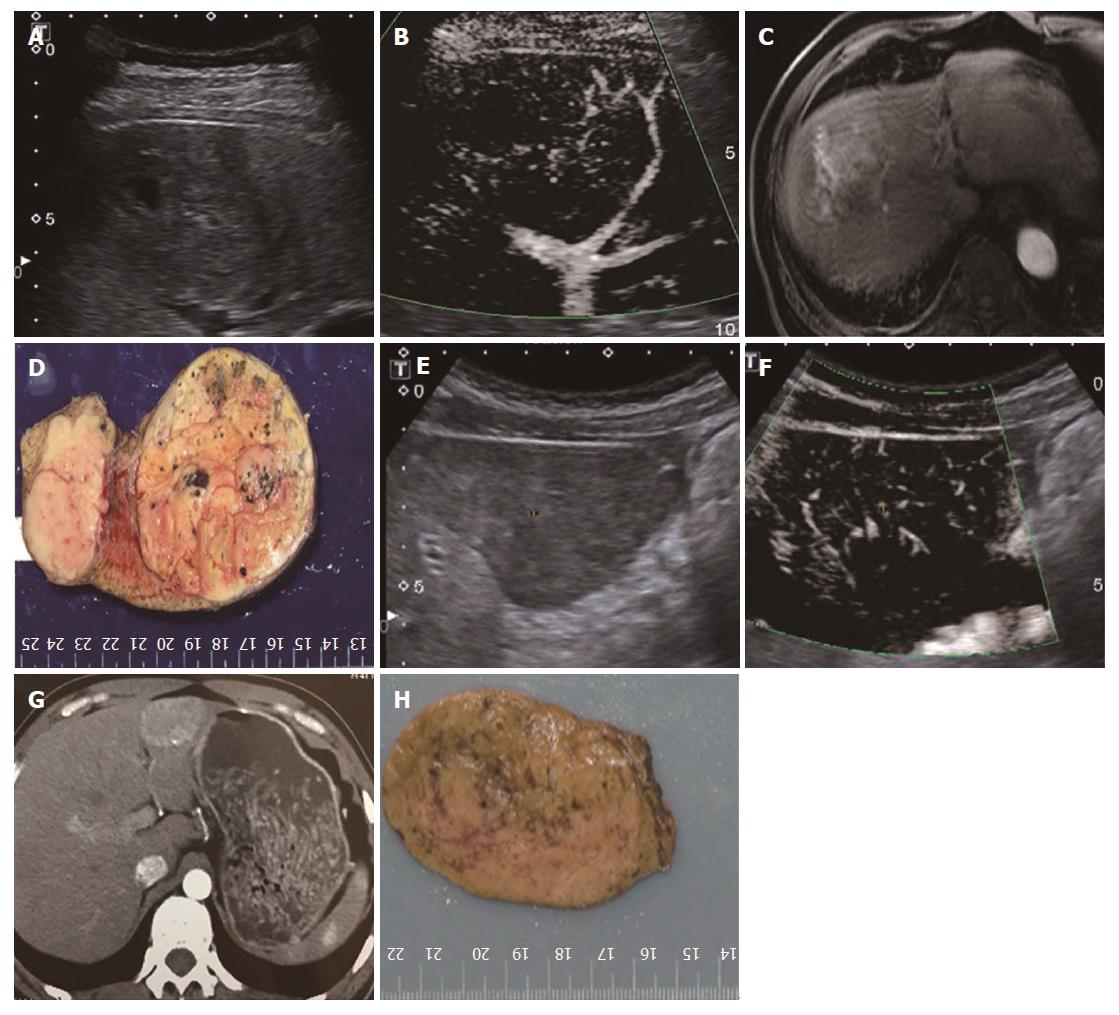Copyright
©The Author(s) 2017.
World J Gastroenterol. Nov 21, 2017; 23(43): 7765-7775
Published online Nov 21, 2017. doi: 10.3748/wjg.v23.i43.7765
Published online Nov 21, 2017. doi: 10.3748/wjg.v23.i43.7765
Figure 5 Diffuse honeycomb type (type IV).
A-D: A 68-year-old male diagnosed with hepatic cellular carcinoma. A: A mixed-echo lesion with a relatively unclear margin was evident in the right liver lobe; B: SMI showed a diffuse honeycomb-distributed microvascular structure; C: Contrast-enhanced MRI showed diffuse enhancement of the lesion in the arterial phase; D: The pathology result showed that the inter-tumor blood vessels were distributed in a grid pattern resembling honeycombs. E-H: A 41-year-old male diagnosed with hepatic adenoma. E: A hypo-echo lesion with a clear margin was evident in the left liver lobe; F: SMI showed a diffuse honeycomb-distributed microvascular structure; G: Contrast-enhanced CT showed diffuse enhancement of the lesion in the arterial phase; H: The pathology result showed that the inter-tumor blood vessels were distributed in a grid pattern resembling honeycombs. SMI: Superb microvascular imaging.
- Citation: He MN, Lv K, Jiang YX, Jiang TA. Application of superb microvascular imaging in focal liver lesions. World J Gastroenterol 2017; 23(43): 7765-7775
- URL: https://www.wjgnet.com/1007-9327/full/v23/i43/7765.htm
- DOI: https://dx.doi.org/10.3748/wjg.v23.i43.7765









